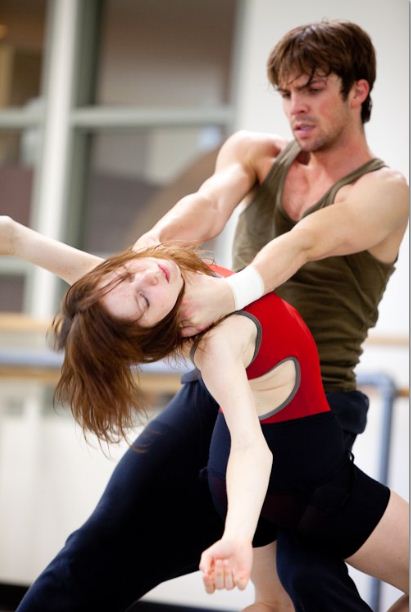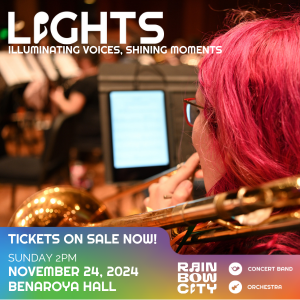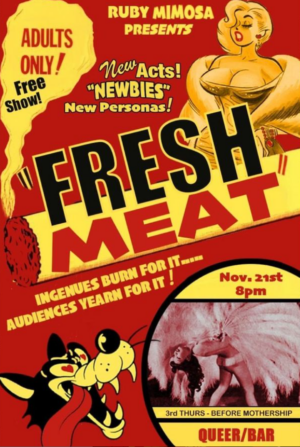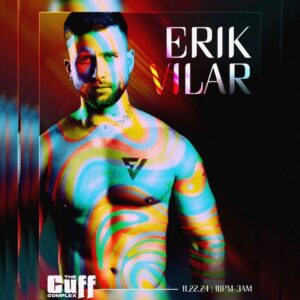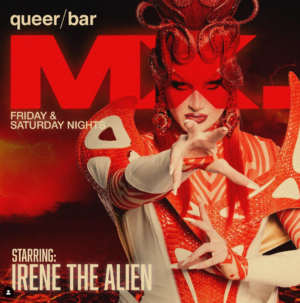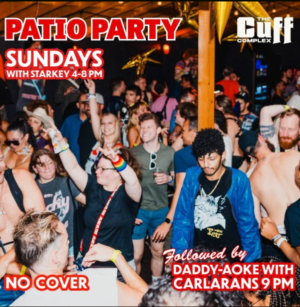Whim W’Him’s presentation of Shadows, Raincoats & Monsters this past weekend was easily one of the best contemporary ballets that Seattle has seen in years. Working off of an electric energy, OIivier Wevers and his talented troupe of dancers gave an emotionally charged performance that crackled with brilliance. If you didn’t see this dazzling performance, then you truly missed out.
According to Wevers, “Whim W’Him is a non-profit dance company founded in 2009. Its goal is to open the world of dance to a wider audience by combining the talents of dancers, choreographers, composers, singers, actors as well as other artists and presenting them in original forms.”
“The mission of Whim W’Him is to provide a platform, centered around choreography and dance, for artists to explore their craft through innovation and collaboration. The organization strives to foster an artistic community by encouraging original projects through and alliance of artists from varied disciplines dedicated to a creative journey in order to reach the community at large,” he added.
Last weekend’s showcase managed to do just that. In a beautiful blending of choreography, emotional dancing, music and visual arts, Whim W’Him created a uniquely enjoyable experience. The show was constructed into three acts, each one devoted to one of the eponymous dances.
The show opened with This Is Not a Raincoat. According to Wevers, “The piece opens in silence, the only sound created by the swishing movement of the raincoats and the dancers’ rhythmic steps.” The dimly lit stage creates a dark and heavy aura, which is only enhanced by the strategic apprehension on each of the dancers’ faces. Confined to narrow panels of light, the dancers looked completely unsure of themselves, beautifully symbolizing the insecurities that come with our self-imposed restrictions in life. At the beginning, a brightly light duet couple dances freely around the stage, providing added contrast to the heavily confined dancers. As the piece progressed, the dancers all shed their raincoats and stepped out of the respected panels of light. The result was nothing sort of a beautiful expression of freedom.
The greatest emotional heft of the evening came next with Monster, which was sub-divided into three mini dances. Again according to Wevers’ unique and powerful vision, “Monster is a triptych exploration of different monsters we may encounter in our lives. The first movement deals with an intolerant society when it rejects homosexuals and drives them into hiding.”
He adds, “The second monster is addiction, and the third, relationship, which depicts a relationship that is itself the monster. The couple can’t stand to be apart, and yet when they are together, they are destructive.” Interestingly, each of these three movements opened with an original poem specifically created for these monsters by RA Scion of Common Market.
“This soul’s simply wasted, so if monsters you call us, we’re those you have created”. Those powerful words open the first monster tackling homosexuality and homophobia. This monster depicted society as a “monster” that homosexuals feel rejected by and must hide from. The gritty piece was completely captivating and managed to depict the tortuous relationship that gays have with the “monster”, as well as with themselves. Dancers Andrew Bartee and Vincent Michael Lopez were exceptionally well matched, especially when it came to emotional projection. At first, I passionately felt that I wanted to see more anger emanating from these dancers, especially after the emotional resonance of Lucien Postlewaite’s raw emotional performance when this monster was previewed at last fall’s Men In Dance showcase. However, as the piece progressed and I realized how much I appreciated the subtle restraint of their emotional response to homophobia. These two mean were brilliantly lost within their own relationship, shutting out any hatred from the world outside. Needless to say, the audience response to their performance was deafening.
“Conviction in spades, although certainty waiting, most comfortable numb, when I at least feel something.” These haunting words opened the evening’s most realistically difficult monster. In a dance performed entirely on the floor, Kylie Lewallen and Ty Alexander Cheng empathetically demonstrated the sheer horror and near impossibility of overcoming a powerful addiction. Through a series of twisted convulsion and sharp, stilted movements it became clear that these two characters were so physically and emotionally beaten down by their mutual addiction that they did not have the will or strength to stand. It literally was not until Lewallen’s character died that Cheng was able to stand up and walk away from his addiction. Never before have I seen the tumultuous and deadly battle with addiction resonate so powerfully and succinctly. Addiction really does devour all humanity and human connection. More importantly, the brilliant choreography demonstrated Wevers ability to evolve past his classical training.
“But honestly, what could we possibly do, when the monster in me loves the monster in you?” Scion’s haunting words opened the third and final monster; an abusive relationship. The relationship dance was easily the most emotionally resonating performance of the night. Lucien Postlewaite and Melody Herrera gave the performances of the evening. Every movement was infused with pain, anger, resentment, sadness and absolute believability. Honestly, Postlewaite was easily the most outstanding performer of the night. His ability to radiate so much emotion is nothing short of outstanding. He is a true performer. The dance seemed to be choreographed as if there was no audience, which made is easier to get lost in this incredibly intense, damaging relationship. The choreography was infused with intensity and was dripping with symbolism. Every time Postlewaite violently dragged Herrera across the stage you just instantly knew that he was dragging the dead weight of their doomed relationship. In an interesting turn of events, Postlewaite’s character repeatedly tried to leave this abusive relationship, only to be pulled back into the madness by Herrera. In our society, it typically seems to be the woman who tries fruitlessly to leave an abusive relationship, so this was an interesting role reversal. Simply put, this dance was beautifully agonizing, in the best way, to watch.
The third and final dance of the evening was Cylindrical Shadows which was created by talented choreographer Annabelle Ochoa Lopez. Inspired by the death of a close friend, Cylindrical Shadows plays with the heavy themes of life and death. According to Lopez, “There is no difference between life and death; they are not opposites, as we are taught to believe. They are both a part of a single continuum, the continuum of life.”
This piece was beautiful performed, including a somewhat surprise appearance by Wevers himself. Despite the classically infused choreography, moving music and awesome dancing, “Cylindrical Shadows” was not my favorite piece of the evening. In part, this was due to the somewhat light-hearted feel of the piece which directly contrasted with the heavy, serious subject material. I could not find a fault with the performance, but the whole number seemed slightly off to me. I would have preferred Monster to end the show, given its emotional impact and cultural timeliness.
Overall, everyone involved with Shadows, Raincoats & Monsters should be rightfully proud. The entire showcase was a master class marriage of dance, visual arts and innovative choreography. I applaud Wevers ability to bring so many talented individuals together in such an innovated and electric format. His willingness to reach beyond his classical training, to challenge his creative process, ensures that Wevers and Whim W’Him will be breaking ground for years to come.


